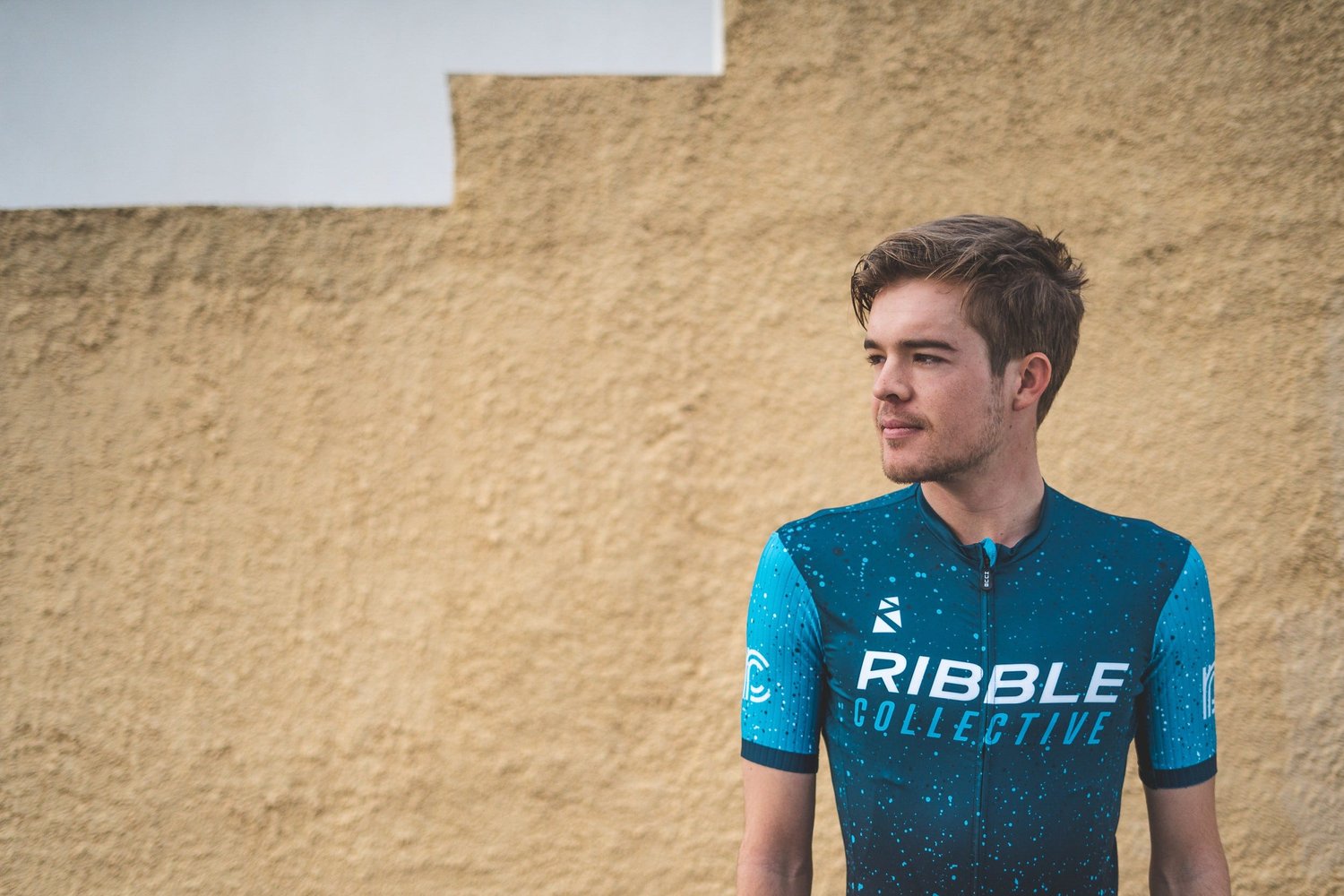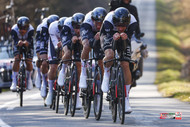The New TTT: Here to Stay?
12th Jan 2024
The Team Time Trial, Triple T, or TTT, is one of the most complicated disciplines in professional cycling. For years, it was also deemed the most boring. That all changed on Stage 3 of Paris Nice.
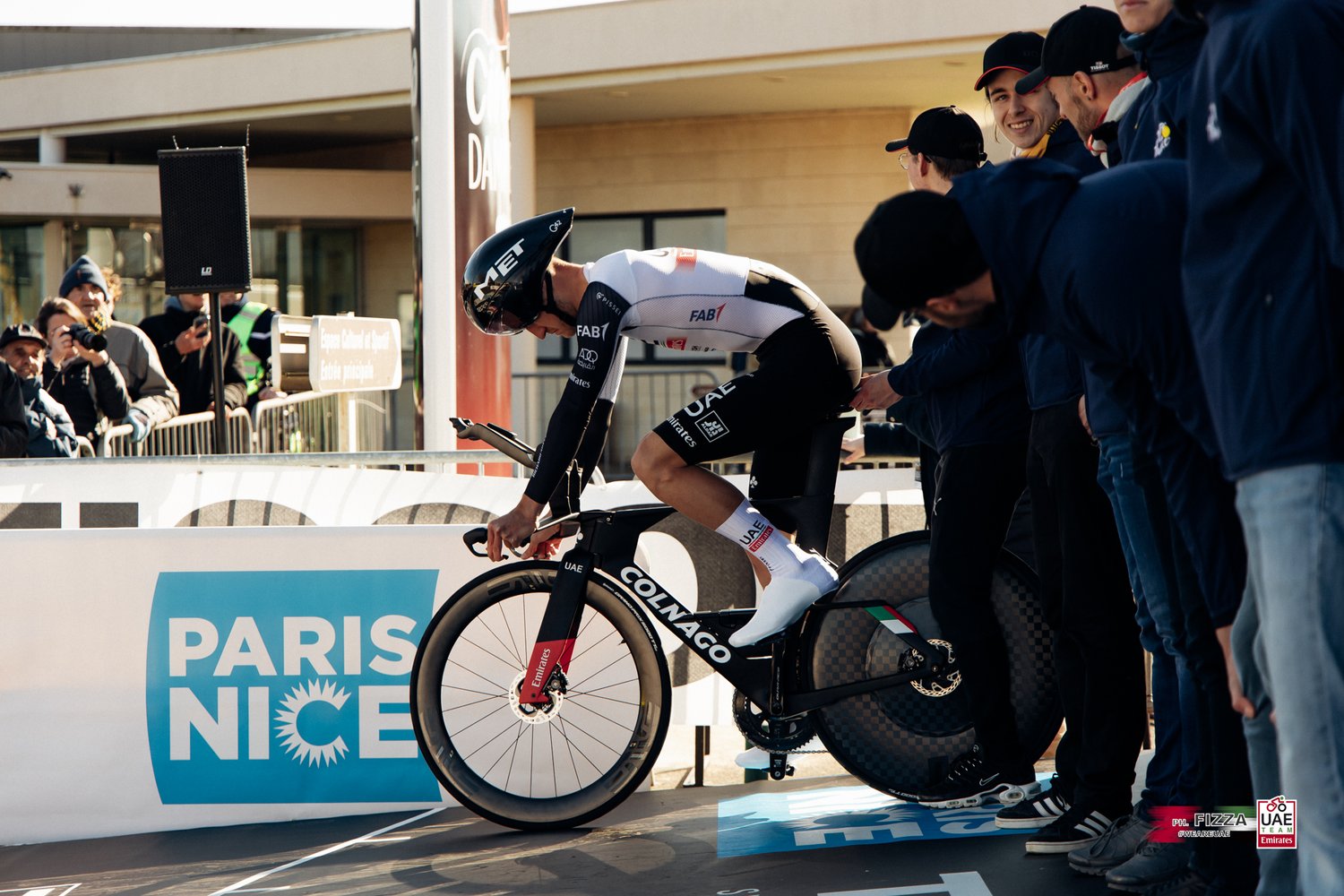
Image by: @SprintCycling
The TTT is back in business. Let us explain.
Since its inception, the TTT has kept a similar format. A full team of riders would start together, and either four or five had to be there at the finish. This meant if the odd rider got dropped, or had mechanical issues, the team could carry on riding to the line. Maybe the odd time you’d see a crash which meant riders had to wait - but it was rare.
There has always been a certain amount of tactical play. You could afford to “burn” one or two of your riders early on, but you never wanted to take the risk of burning too many, just in case one of the final four had a mechanical failure.
Stage 3 of Paris Nice flipped TTTing as we know it on its head. Instead of the time being taken on the fourth rider across the line, it was taken on the first. This led to some interesting tactics, and some very interesting possibilities for future races.
With one simple change, the Team Time Trial became an enigma
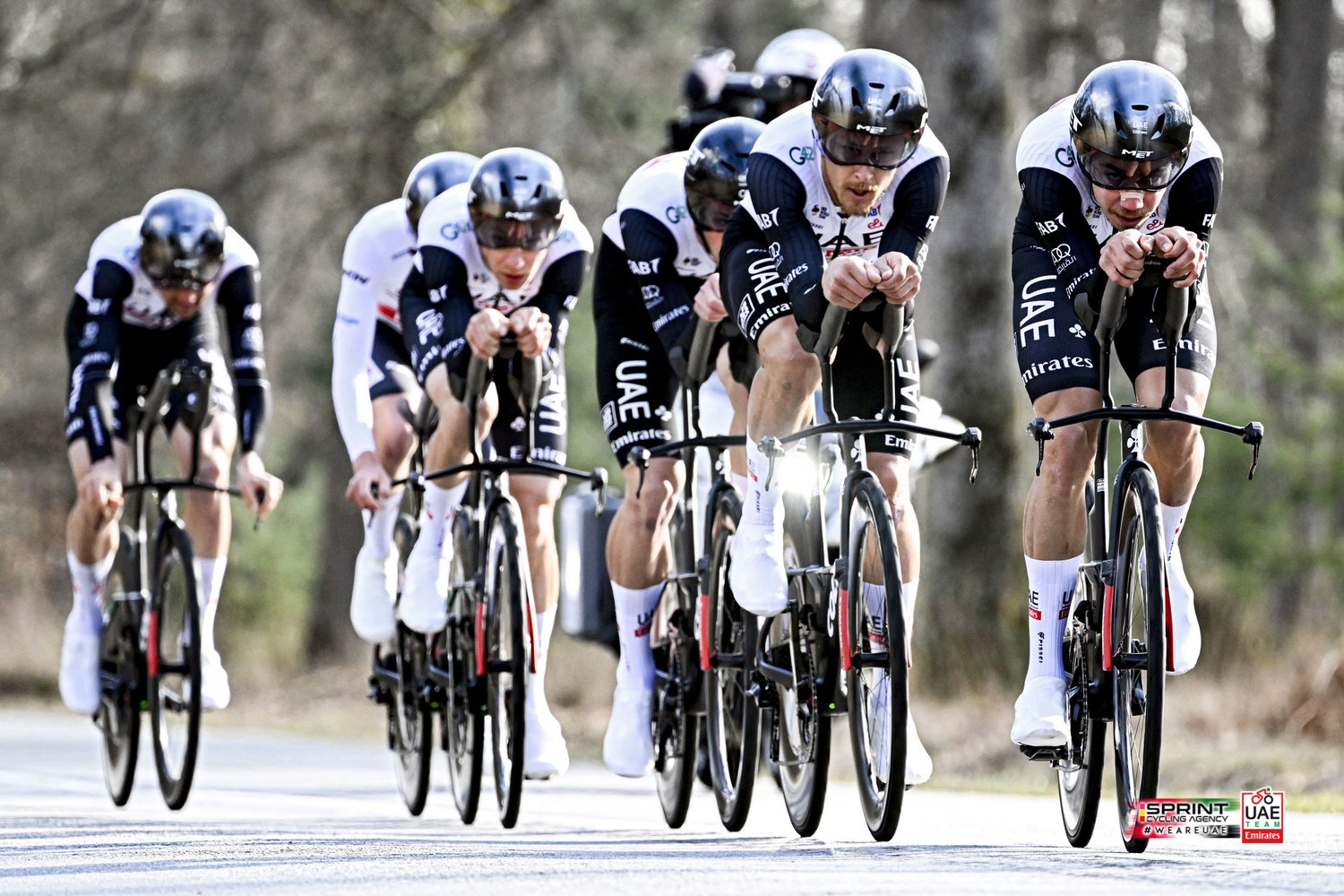
Image by: @SprintCycling
There are so many questions that teams have to consider. How many riders should we burn? Should we do a lead out? Should we still finish with multiple riders?
In Paris Nice, the winners were Jumbo-Visma, the Dutch team had three riders remaining at the finish line. Second place EF Education-EasyPost finished one second behind, with a charging Magnus Cort sprinting solo to the line. The Aussie squad Jayco AlUla were third with sprinter Michael Matthews sprinting to the line with GC man Simon Yates on his wheel. Then there was UAE Team Emirates who had just one man crossing the line solo. Nice handlebars Tadej.
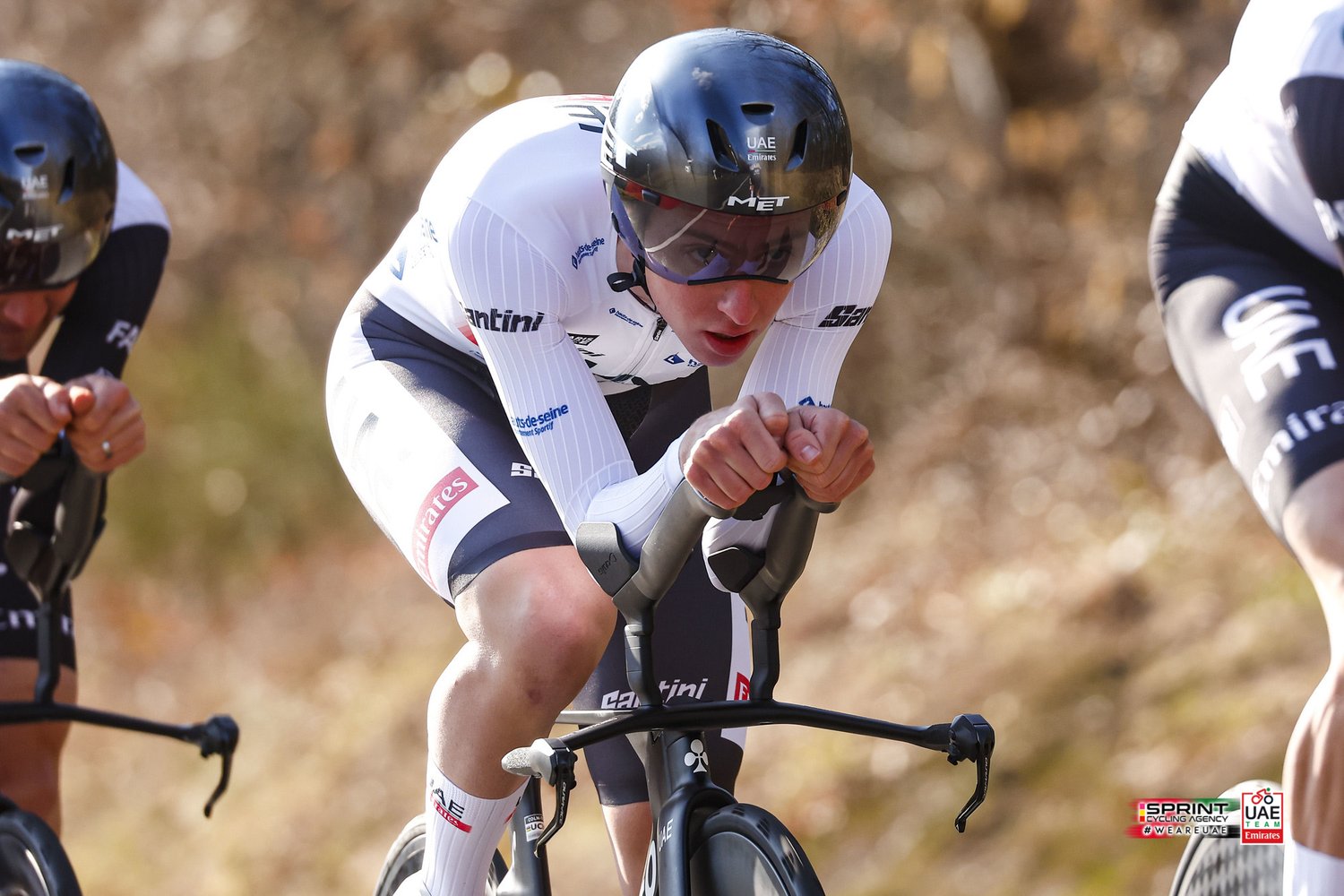
Image by: @SprintCycling
Given it was the first iteration of this style of race, there was always going to be time gaps. Teams will take time to figure this style of racing out, and to perfect it. That is the beauty of this new format though, there will be different tactics everytime. Every course will require a different riding style.
Here are some scenarios:
Option One:
- 40km TTT (30km Flat, 10km Uphill)
This is where the new edition TTT comes into its own. What do you do in this situation? Do you have your best climber skipping turns on the flat in order to keep them fresh for the final 10km? Do you burn all of your riders before the mountain, effectively leaving one final guy to perform? Do you continue the leadout train up the mountain too? There are so many possibilities.
Option 2:
- Final Week of a Stage Race
This would be cruel, but who said bike racing was easy? Team Time Trials often happen in the first week of a Grand Tour because it is less likely that riders will have crashed, or gotten sick. Why not throw caution to the wind and put a TTT on the penultimate day of the Tour? Imagine a situation like the 2022 Tour de France where Tadej Pogacar only had three teammates remaining in the race and Jonas Vingegaard had five. Would this lead to more cautious racing in the days leading up? Or, would it cause a rider like Pogacar to go on the attack.
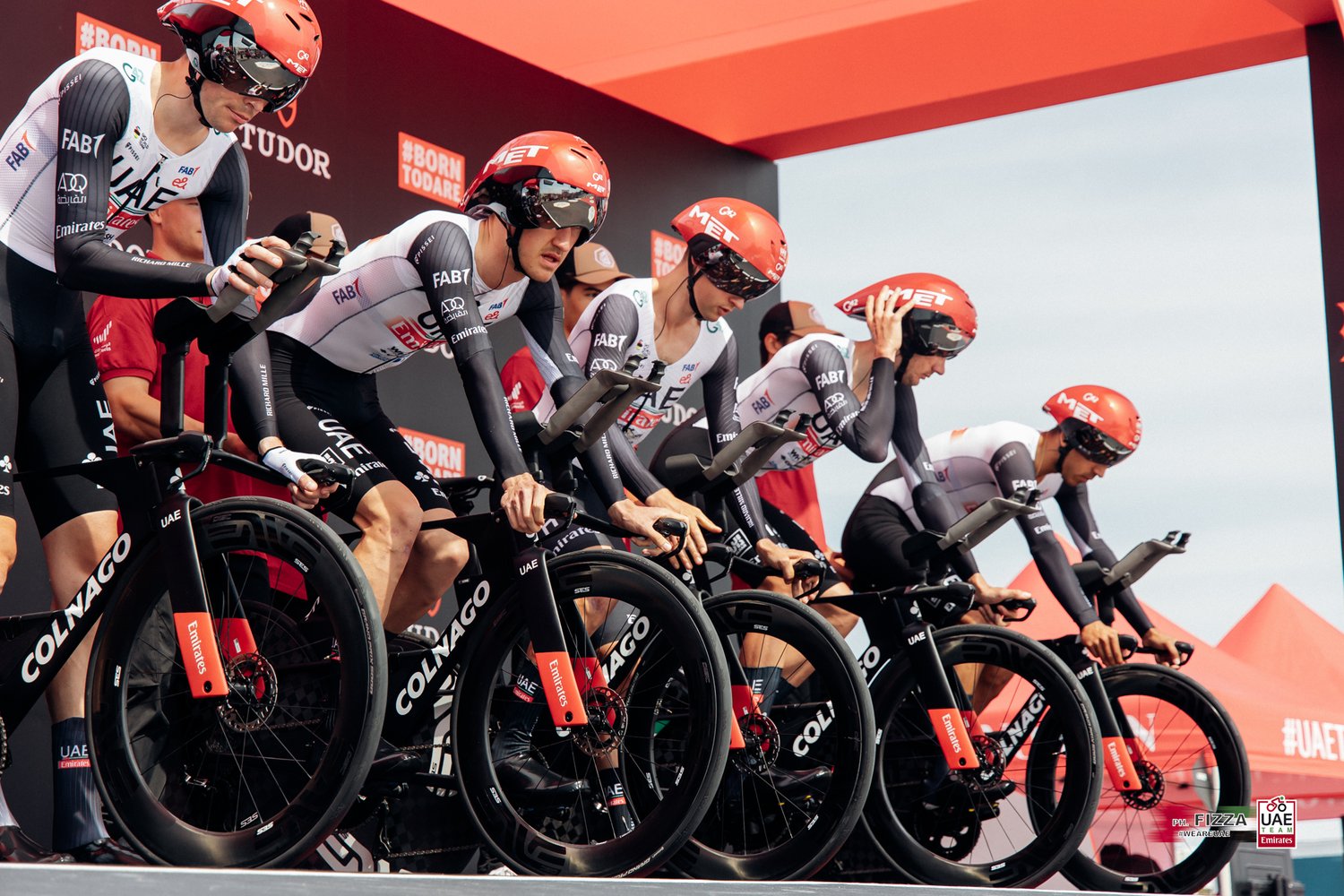
Image by: @fizzaazzif
We hope the new form TTT is here to stay. Every sport has to go through a reform at some point. Cricket embraced the Twenty20 style that mixed things up, and while this is more evolution than revolution for cycling, it is a step in the right direction.
Credits
Images by @SprintCycling & @fizzaazzif
About the author
Joe Laverick’s cycling introduction was via the British time-trial scene, since starting the sport, he has been all about speed. He’s a freelance writer and privateer racer who mixes road, time trial and gravel racing. To this day, he remains one of the only riders on the planet to have beat Remco Evenepoel in a time trial.
